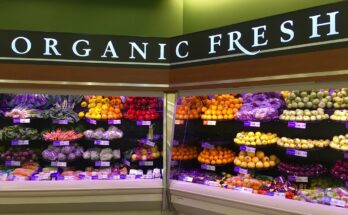Do you ever wonder how safe the food you eat really is? With the rise of processed foods in our modern diets, it’s important to understand the impact of food processing on food safety.
Additives and preservatives are commonly used in processed foods to enhance flavor, texture, and shelf life. However, these substances can pose potential risks to your health if consumed in excess.
Contamination during food processing is another concern, as improper handling and storage can lead to the growth of harmful bacteria or the presence of foreign objects in your food.
Heat treatment, such as cooking or pasteurization, can affect the safety of your food by eliminating or reducing harmful microorganisms.
Packaging and storage also play a crucial role in maintaining food safety, as improper packaging can lead to spoilage and contamination.
To ensure the safety of processed foods, regulations and quality control measures are in place to monitor production processes and ingredients.
Understanding the impact of food processing on food safety is essential for making informed choices about the food you consume.
Additives and Preservatives in Processed Foods
Did you know that when you consume processed foods, you’re also ingesting a multitude of additives and preservatives that can potentially affect your health?
These substances are added to enhance flavor, texture, and shelf life. However, they may have negative consequences on your well-being. For example, some additives like monosodium glutamate (MSG) have been linked to headaches and allergic reactions in certain individuals.
Preservatives such as sodium nitrate, commonly found in processed meats, have been associated with an increased risk of cancer. Additionally, the excessive consumption of processed foods high in additives and preservatives can contribute to weight gain, heart disease, and other chronic health conditions.
Therefore, it’s important to be mindful of the additives and preservatives present in processed foods and strive for a balanced diet that includes fresh, whole foods whenever possible.
Contamination Risks during Food Processing
Be cautious of potential contamination risks that can arise while processing your food, as they can pose a serious threat to your well-being. During the food processing stage, there are several ways that contamination can occur.
One common risk is cross-contamination, where bacteria or other harmful microorganisms are transferred from one surface or ingredient to another. This can happen when utensils, equipment, or hands aren’t properly cleaned between handling different foods.
Another risk is the introduction of foreign objects, such as metal fragments or plastic pieces, which can occur if proper quality control measures aren’t in place.
Additionally, improper storage of raw materials or finished products can lead to contamination, as bacteria can multiply in the right conditions.
Therefore, it’s crucial to maintain good hygiene practices, implement proper cleaning procedures, and have strict quality control measures in place to minimize the risk of contamination during food processing.
Effects of Heat Treatment on Food Safety
To ensure the highest level of safety in your food, it’s crucial for you to understand how heat treatment affects the overall quality and well-being of what you consume. Heat treatment plays a significant role in food processing as it helps to eliminate harmful bacteria, viruses, and parasites that may be present in raw food materials. By subjecting food to high temperatures, heat treatment effectively destroys these pathogens, reducing the risk of foodborne illnesses.
Additionally, heat treatment can also improve the shelf life of food products by slowing down spoilage and enzymatic reactions. However, it’s important to note that excessive heat treatment can lead to the loss of essential nutrients and changes in the taste, texture, and color of the food. Therefore, finding the right balance in heat treatment is crucial to maintaining both food safety and quality.
Packaging and Storage Considerations
Packaging and storage considerations play a crucial role in ensuring the freshness and longevity of your food products. When it comes to packaging, choosing the right materials is essential. Food packaging should provide a barrier against moisture, oxygen, and light, which can all contribute to the growth of bacteria and spoilage. Proper packaging also helps to prevent cross-contamination between different food products.
Additionally, the type of packaging used should be suitable for the specific food item, taking into account factors such as its moisture content and sensitivity to temperature changes.
In terms of storage, it’s important to maintain the correct temperature and humidity levels to prevent microbial growth. This includes refrigerating perishable foods and storing dry goods in cool, dry places.
By considering these packaging and storage factors, you can ensure that your food products remain safe and of high quality.
Importance of Regulation and Quality Control
Regulation and quality control are crucial for ensuring the freshness and longevity of your food products, so it’s important to stay on top of them. These measures play a vital role in maintaining food safety throughout the processing and distribution stages.
By implementing strict regulations, authorities can enforce proper handling, packaging, and storage practices. This helps to prevent contamination and spoilage, ensuring that the food you consume is safe and healthy.

Quality control measures, such as regular inspections and testing, further ensure that the products meet the required standards. These regulations and quality control processes also help to build consumer trust in the food industry.
By knowing that there are strict guidelines in place, you can have confidence in the safety and quality of the food you purchase.
Conclusion
In conclusion, you should be aware of the impact of food processing on food safety. Additives and preservatives in processed foods can pose risks, and contamination can occur during processing.
Heat treatment can affect the safety of food, and proper packaging and storage are crucial.
It’s essential for regulations and quality control to be in place to ensure the safety of processed foods.
By being informed and cautious, you can make healthier choices and reduce the potential risks associated with processed foods.




